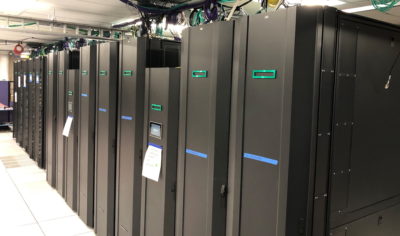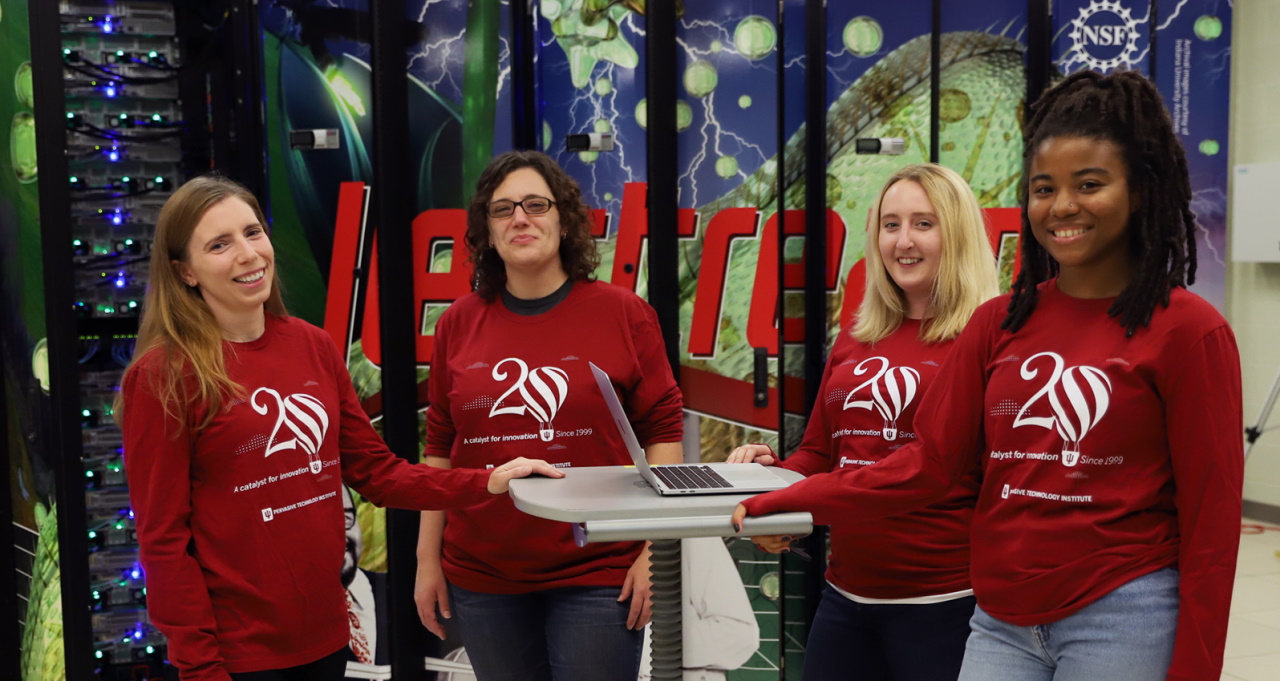This back-to-school season, many universities are powering on brand new AI supercomputers. Researchers and students working in fields from basic science to liberal arts can’t wait to log on.
“They would like to use it right now,” said James Wilgenbusch, director of research computing at the University of Minnesota, speaking of Agate, an accelerated supercomputer Hewlett Packard Enterprise is building.
It’s one of at least eight new academic systems lighting up around the world — four in America’s heartland and two in the U.K.
Before the semester’s end, Agate will deliver seven petaflops of umph. It will crunch through “research from socio-economic trends to celestial objects — it really will serve the full gamut,” he said of the system to be housed at the Minnesota Supercomputing Institute (MSI) that will link 265 NVIDIA A100 Tensor Core GPUs on an NVIDIA HDR 200Gb/s InfiniBand network.
Agate will serve about 4,500 users, working under a thousand principal investigators who since January have already run a whopping 138,612 GPU-accelerated jobs on MSI’s existing systems.

“We’re seeing annual user growth, the greatest amount of it in life sciences and liberal arts — fields like geology, history, poli-sci, marketing — anywhere people have vast quantities of unstructured data and they’re attempting to make sense of it,” he said.
AI Supercomputer Helps Fight COVID
Demonstrating the power of accelerated computing, the Minnesota Department of Health reserved a portion of MSI’s system in its fight against COVID-19. It’s sequencing genomes for contract tracing and to track variants of the coronavirus.
“Collaborations like this make the role of universities in innovation and life saving more obvious to the public,” said Wilgenbusch, pointing to articles in a Minneapolis newspaper.
Virtual GPUs Power Indiana Classrooms
Some 600 miles southeast, Indiana University (IU) is standing up two AI supercomputers packing a total of 616 A100 GPUs.
Big Red 200, built by Hewlett Packard Enterprise, will serve the nine IU campuses. Jetstream-2, built by Dell Technologies, will power work at several partner institutions from Cornell to the University of Hawaii.
Tapping the A100’s ability to offer fractions of a processor, Jetstream-2 will host classes with hundreds of students, each using a slice of a GPU’s performance to learn popular AI skills like image classification. One IU researcher presented a paper last November benchmarking the virtual GPU capability.
“Now whole classrooms can be trained in one go, so more people get access,” said Winona Snapp-Childs, chief operating officer of IU’s Pervasive Technology Institute and leader of an AI-for-everyone initiative.
A Vision of Ubiquitous AI
More than 2,500 students use IU’s current GPU-accelerated systems. They ran more than 40 percent of the work for the university’s record $1 billion of research contracts and grants spread across 178 departments last year.
“Funding agencies realize the importance of machine learning in academic fields across the spectrum,” said Snapp-Childs.
“AI and accelerated computing help push the boundaries of science, and I can imagine they will come to handle half of our research over the next 5 to 10 years as these techniques become ubiquitous and imperative for research,” she added.
The work spans a spectrum that can set your head spinning. Researchers are tapping AI for everything from tracking down COVID misinformation on social networks to studying the genome of rice to improve harvests.
Delta Pioneers Accessible Supercomputing
Next door, the National Center for Supercomputing Applications (NCSA) at the University of Illinois at Urbana-Champaign is expanding use of accelerated computing with Delta, an AI supercomputer packing more than 800 A100 GPUs.
“We will help emerging research areas such as computational archaeology and digital agriculture take advantage of new computing methods and hardware while making advanced systems more usable and accessible to a broad community of researchers,” said William Gropp, a principal investigator and NCSA director who oversees Delta.
The system is one way the National Science Foundation is spreading GPU-based computing as a common tool for accelerating research. The work includes an initiative to make Delta and future systems more accessible to people with disabilities.
Florida Spreads the AI Sunshine
A thousand miles south, the University of Florida’s HiPerGator AI system provides another shining example of accelerated computing.
In a recent article in the Gainesville Sun, provost Joe Glover said the system will spread AI skills much like Henry Ford’s first assembly line made cars affordable for Americans. The university aims to add 100 AI-focused faculty to make machine learning ubiquitous across its curriculum with a stated goal of creating 30,000 AI-enabled graduates by 2030.
HiPerGator AI linked a whopping 1,120 A100 GPUs on a HDR 200Gb/s InfiniBand network to take the No. 22 spot in the latest TOP500 list of the world’s fastest supercomputers. It was built in just a few weeks thanks to its use of the NVIDIA DGX SuperPOD reference architecture, a recipe for stacking NVIDIA DGX systems in Lego-like style.
Studying Abroad: AI Supercomputing’s Far Reach
These five AI supercomputers represent just a few peaks in a rising range that crisscrosses the U.S. and Europe.
- On the UC Berkeley campus, researchers just turned on Perlmutter, the world’s fifth fastest system, packing 6,144 A100 GPUs.
- The University of Cambridge debuted CSD3, a cloud-native supercomputer built on Dell EMC PowerEdge, which is now the fastest academic system in the U.K. and hit No. 3 on the Green500 list of the world’s most energy-efficient systems.
- The University of Edinburgh is building a system with 448 A100 GPUs, the latest in the four-system network run by the DiRAC research group in the U.K.
- And Linköping University is now home to Sweden’s largest supercomputer, BerzeLiUs, which will serve a national AI initiative and be shared with researchers at Singapore’s Nanyang Technical University.
They are among high-performance systems sprinkled around the world, advancing science with machine learning and accelerated computing.
Photo at top: From left, Winona Snapp-Childs and Sheri Sanders, Director of the National Center for Genome Analysis Support, give students Christine Campbell and Lyric Cooper a tour of the Jetstream data center at Indiana University.
